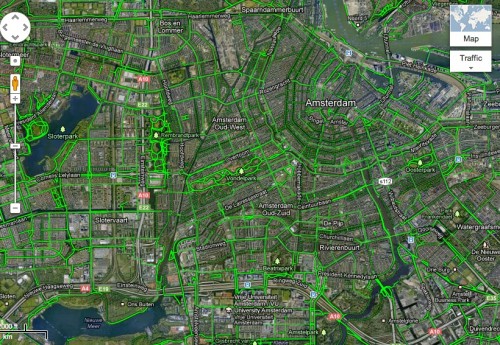
Image credit: Prashanth dotcompals
In the realm of Google Maps, there’s good news for transit users, and better news for bike users.
First, the good news comes in an article by Jeremy Owens of the San Jose Mercury News titled “Google Maps mobile app’s transit offerings work great for novices, but hard-core Bay Area riders will want more”. Owens shares his experience with Google’s new transit app, finding some good in it:
Google has added transit lines from hundreds of cities to Google Maps as of August, and its Bay Area offerings are extensive, including small services such as the Menlo Park Midday Shuttle. The biggest addition is schedules for all of the lines it offers, making finding departure times simple and transfers between agencies more predictable.
Unfortunately, Owens sees one crucial flaw:
“I put it to the test to see if it could replace the mishmash of agency-specific transit apps I use on a daily basis to maneuver around the Bay Area. The verdict: No, because of one big flaw – the lack of real-time departures.”
Now, for the better news– Google Maps has impressively published 530,000km (that’s 329,327 miles) of bicycle infrastructure in Europe and Australia. Until recently, Google Maps did not have any bicycle specific directions or show bicycle routes and paths in Europe or Australia, which is perhaps surprising as Europe is home to countries with some of the highest bicycle mode-share in the world and Australia is seeing more and more bicycle infrastructure with each year!
Cycling directions and turn-by-turn navigations are now available in the following countries: Australia, Austria, Belgium, Denmark, Finland, The Netherlands, Norway, Sweden, Switzerland, and the UK.

See all those green lines and dashes? They’re all bicycle paths, lanes, and routes– no wonder 50% of all trips in Amsterdam are by bike! Image via Google Maps
And in more of the”better” news, Google Maps has now added voice-guided navigation for bicycle directions [for Andriod phone users]! That’s right, cyclists can now mount their Android phones to their handlebars and receive turn-by-turn directions and navigation, as well as voice-guided directions.
Google appears to be allocating resources to accommodating multiple modes of transportation with their maps and directions. It seems to reinforce and reflect our reality– more and more people are taking to two wheels and transit, and that is great news!
